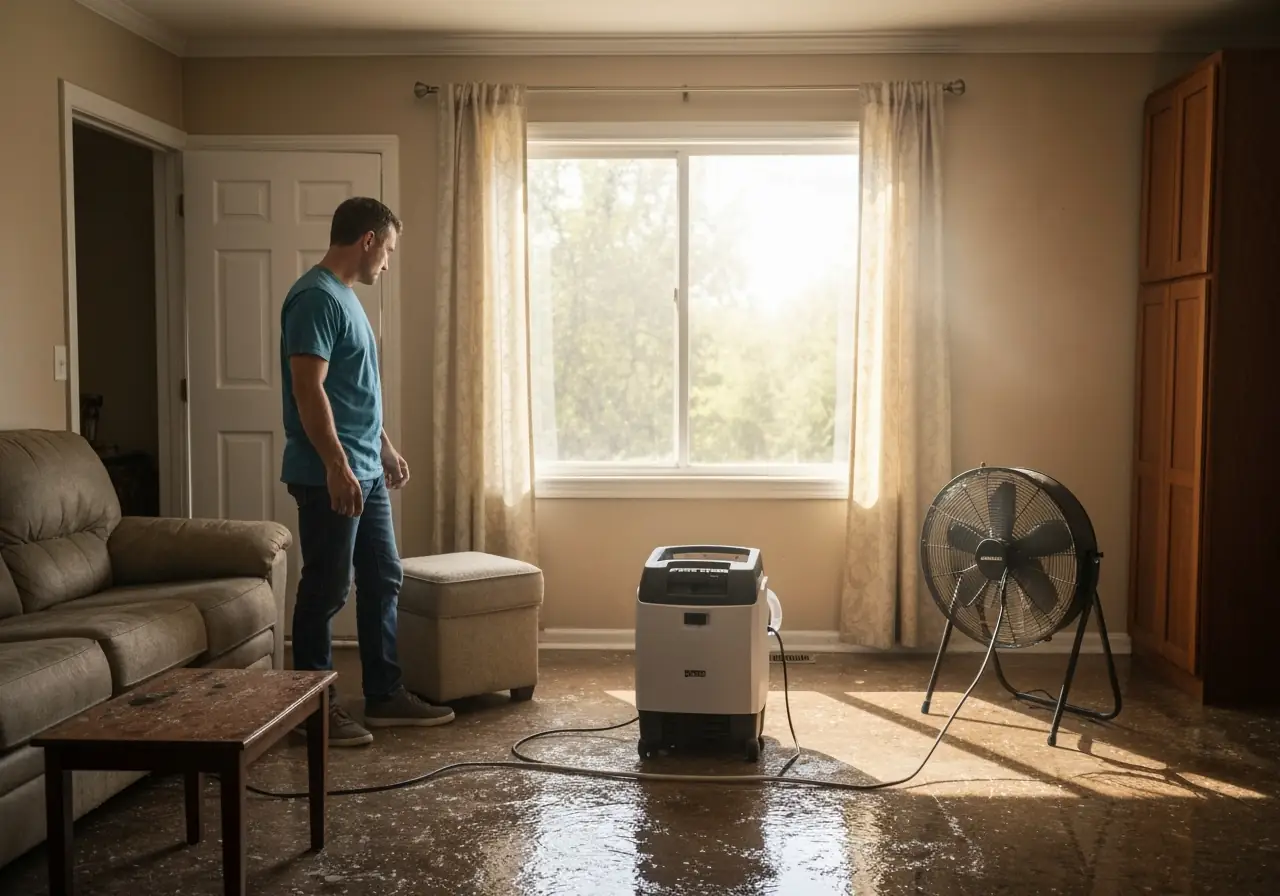Dehumidifier Size & Power: Home vs Commercial Guide
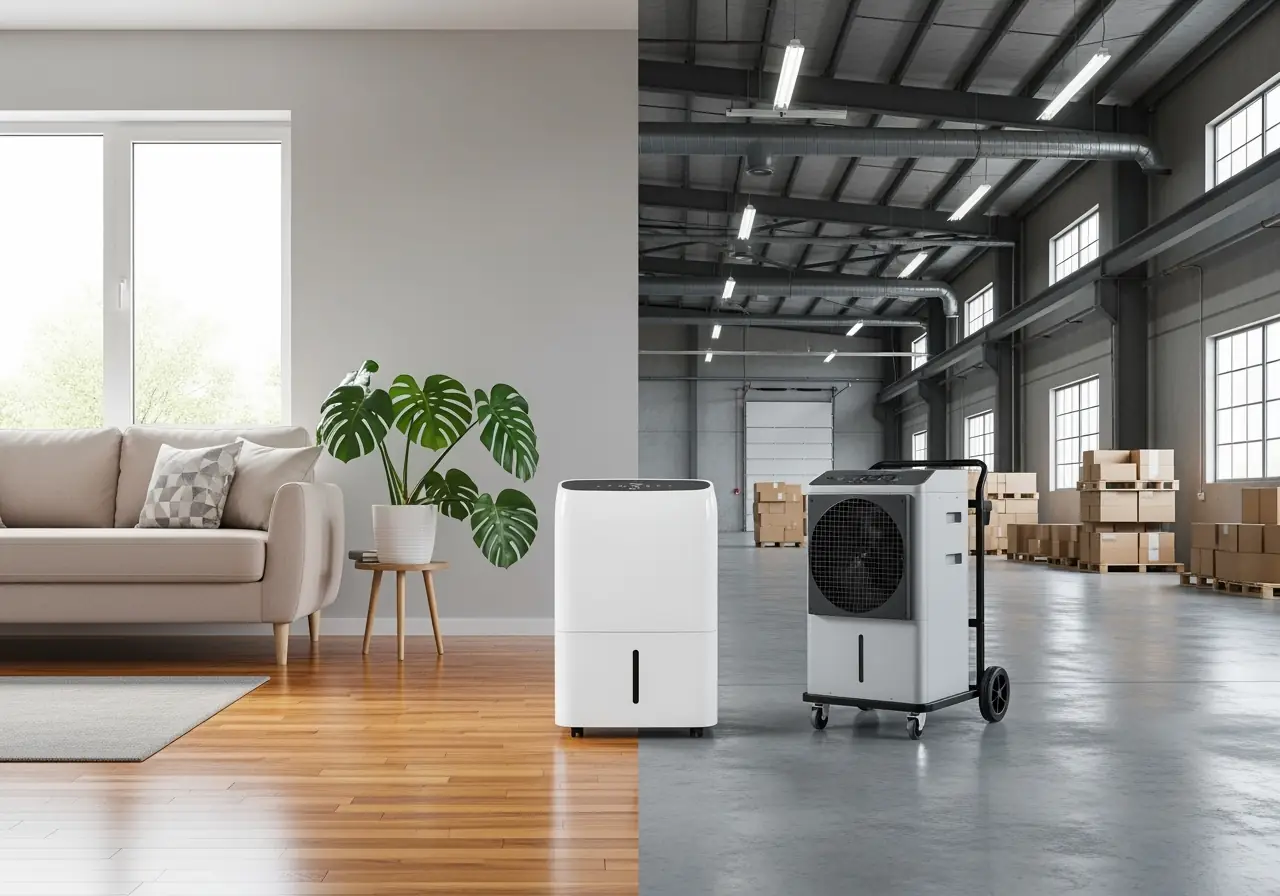
When choosing between a commercial dehumidifier and a residential dehumidifier, the differences go far beyond just size or cost. This guide explores the key differences in moisture removal capacity, power requirements, design features, and applications. Commercial dehumidifiers can extract 70 to over 200 pints of moisture per day, making them ideal for warehouses, offices, hotels, and industrial spaces. In contrast, residential units typically remove 30–70 pints daily - perfect for basements, bedrooms, or small living spaces. Residential dehumidifiers are compact, portable, and run on standard 115V power, while commercial-grade models are more powerful, often ducted, and run on high-voltage or multi-phase power systems.
This guide will help you compare professional vs. home dehumidifiers, understand the best use cases for each, and review the top-rated dehumidifiers to choose the best unit for your specific humidity control needs.
Size and Capacity Differences
The capacity difference between dehumidifier types represents one of the most significant distinctions in moisture removal equipment. Understanding these differences helps you select the right unit for your specific needs.
Residential Units: 30–70 PPD vs Commercial Units: 70–280+ PPD
Moisture removal capacity is measured in pints per day (PPD), indicating how much water a dehumidifier can extract within a 24-hour period. Residential dehumidifiers typically remove between 30 to 70 pints of moisture daily, making them suitable for common household humidity issues. In contrast, commercial models extract anywhere from 70 to more than 280 pints per day, providing substantially greater moisture removal capability.
Additionally, capacity ratings vary based on testing conditions. For instance, a unit rated at 70 PPD at standard conditions (80°F, 60% RH) can remove up to 135 PPD at higher humidity and temperature levels (90°F, 90% RH). This capacity rating is crucial when comparing different models of dehumidifiers.
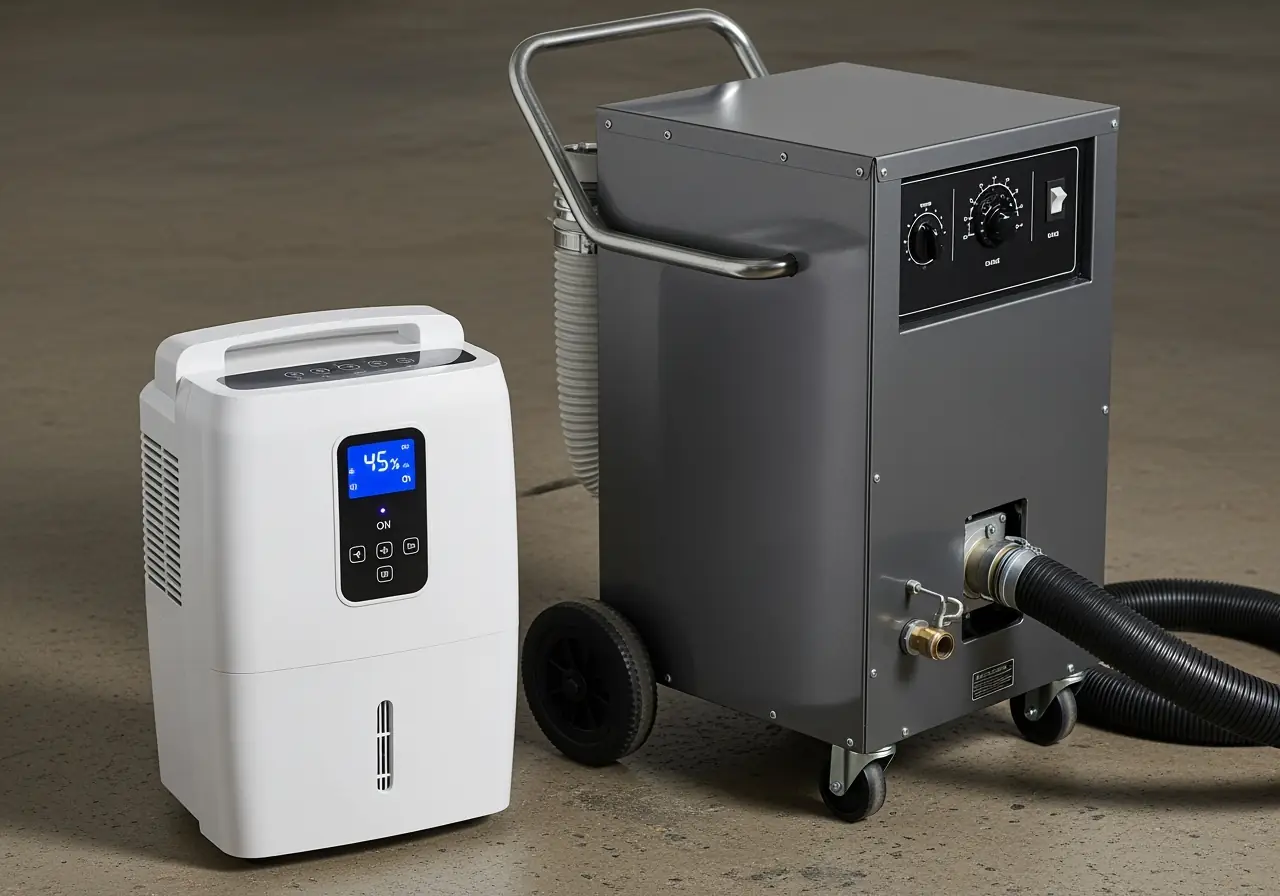
Room Coverage: Small Rooms vs Large Warehouses
The coverage area directly correlates with a dehumidifier's capacity. Residential units excel in small to medium spaces:
- Small capacity (30-70 PPD): Ideal for bedrooms, living rooms, or basements up to 1,000 square feet
Commercial dehumidifiers handle substantially larger areas:
- Medium capacity (70-150 PPD): Suitable for larger offices or grow rooms spanning 800-2,000 square feet
- Large capacity (150+ PPD): Designed for warehouses, industrial facilities, or whole buildings covering 2,300-4,500 square feet
Dehumidifier Sizing Guide: Choosing Based on Square Footage
To determine the appropriate dehumidifier size, consider both your space dimensions and moisture conditions. This dehumidifier sizing chart can help you choose the right unit:
- For spaces under 500 square feet: A small dehumidifier with 10-12 pint capacity typically suffices
- For 600-800 square feet with moderate dampness: A medium-capacity unit (30-39 PPD) works well
- For 1,200+ square feet or very damp areas: Large-capacity units (50-60 PPD) are necessary
For extremely damp environments or areas with special considerations like washer/dryers nearby or high humidity climates, add 5-10 pints to the recommended capacity. When considering what size dehumidifier to choose, it's always better to err on the side of a slightly larger capacity.
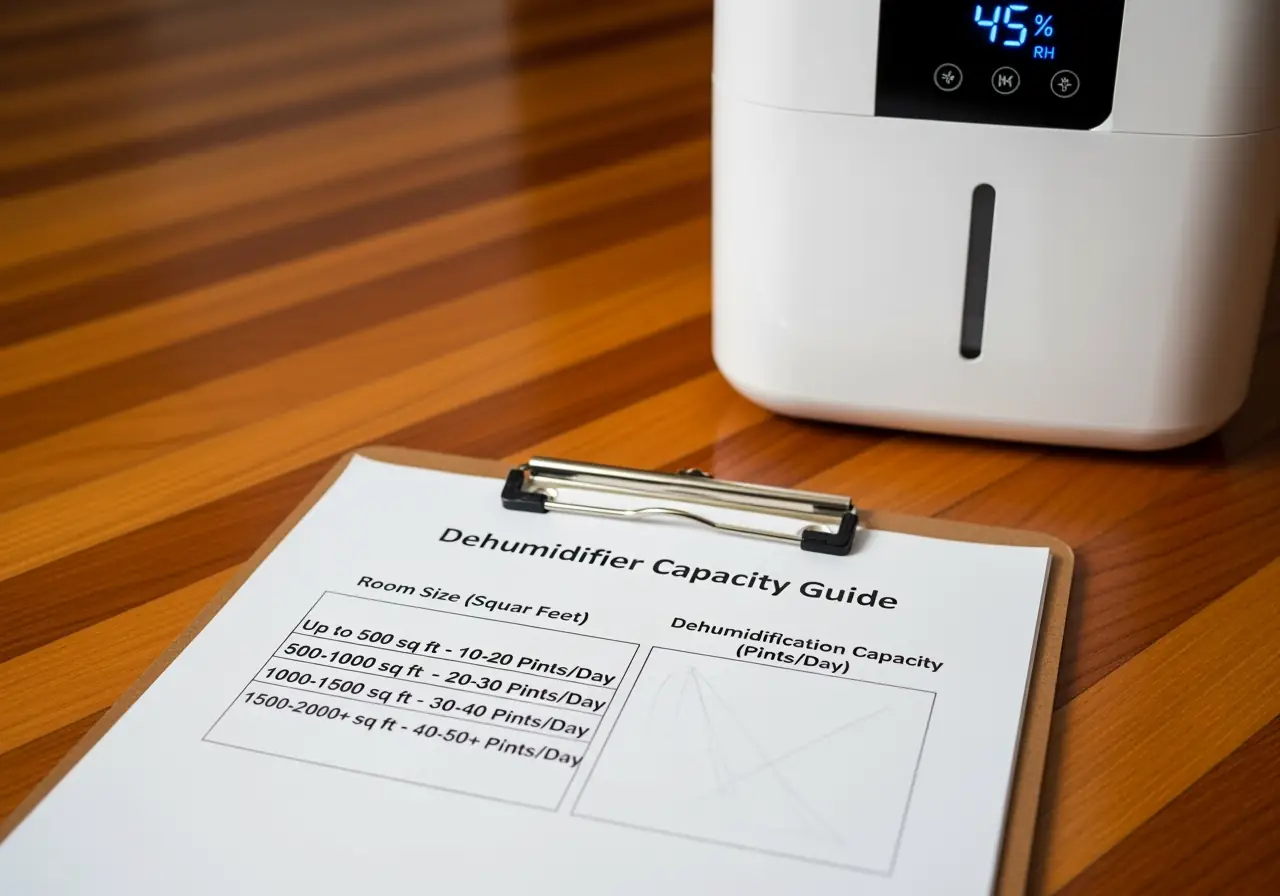
Need expert guidance on selecting the right dehumidifier for your specific space? Contact Recovery Pros today for a free consultation and quote on your next restoration or remediation project.
Power and Performance Capabilities
Performance capabilities reveal significant distinctions between residential and commercial dehumidifiers, extending beyond their physical dimensions.
Moisture Removal Rate: Daily Extraction Comparison
The extraction efficiency between dehumidifier types varies considerably under different conditions. Residential models remove between 30-70 pints per day, while commercial units extract anywhere from 70 to over 200 pints daily. The Santa Fe Ultra70, for example, removes 70 pints at 80°F and 60% relative humidity but drops to 52.45 pints at 73°F and 60% RH. Consequently, actual performance fluctuates based on environmental conditions. The dehumidification rate is a crucial factor to consider when choosing between different models.
Continuous Operation: Residential vs Professional Dehumidifier
Commercial dehumidifiers excel at uninterrupted operation - a critical advantage in industrial settings. Unlike residential models that often cycle on and off, professional units are engineered specifically for extended operation periods. Commercial models typically feature larger water collection tanks or direct drainage options, eliminating the need for frequent emptying that residential units require.
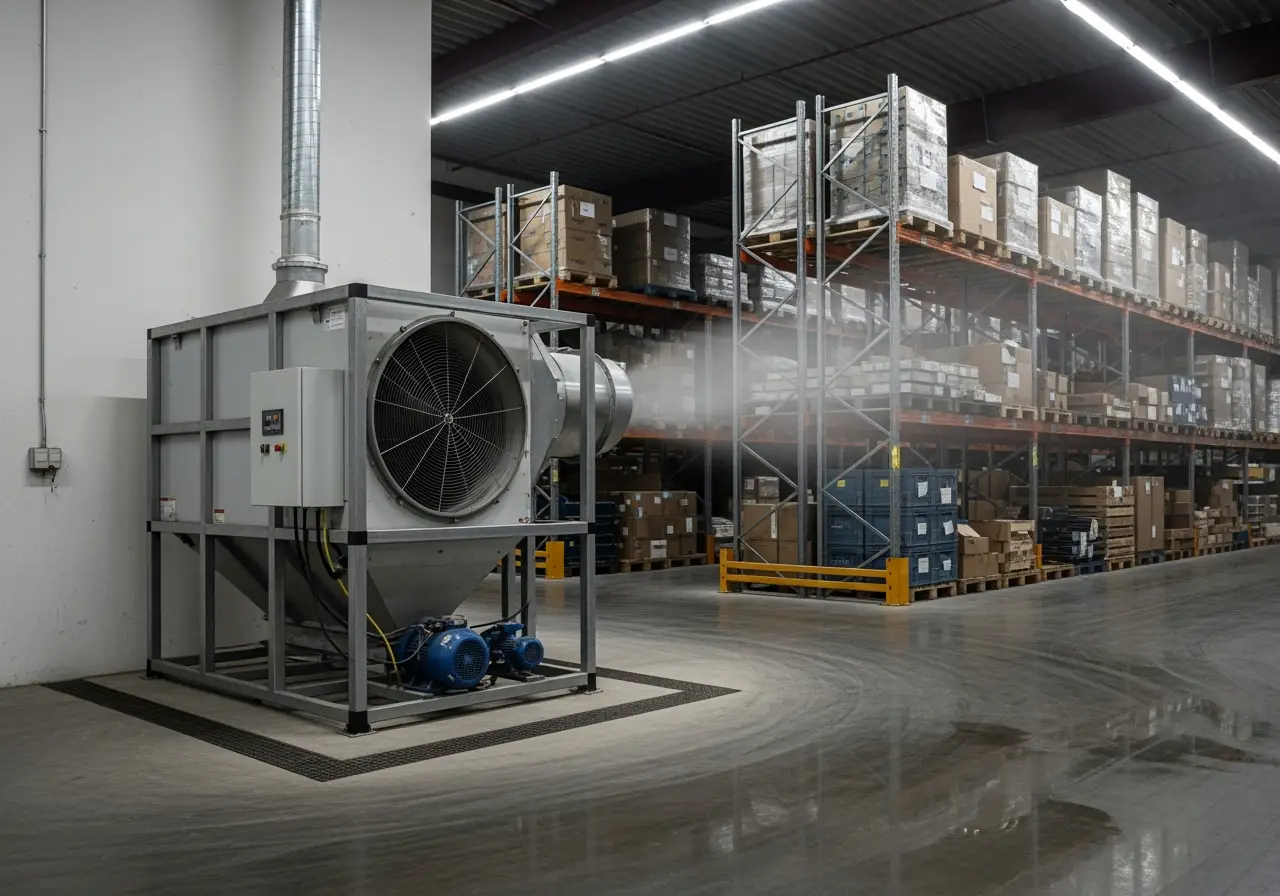
Energy Efficiency: Energy Star Ratings and Power Draw
Despite their greater capacity, commercial units aren't necessarily less efficient. ENERGY STAR certified dehumidifiers use approximately 14% less energy than standard models. Power consumption varies significantly:
- Small residential (22 pint dehumidifier): ~300 watts
- Medium residential (35 pint dehumidifier): ~460 watts
- Large residential (50 pint dehumidifier): ~590 watts
- Commercial units: 700+ watts
Efficiency is measured by integrated energy factor (IEF) in liters of water removed per kilowatt-hour. Higher IEF values indicate greater efficiency. When shopping for an energy efficient dehumidifier, look for Energy Star dehumidifiers to ensure optimal performance with minimal energy consumption.
Noise Levels: Quiet Operation vs High Airflow Output
Residential dehumidifiers prioritize quiet operation, making them suitable for living spaces. The Santa Fe Ultra70, for example, produces about 55.3 dBA. Commercial units generate more noise output due to higher airflow rates (200-400 CFM vs. 100-200 CFM for residential models). This trade-off between noise and performance becomes an important consideration depending on where the unit will operate. If you're looking for the quietest dehumidifier for home use, focus on residential models designed for low noise operation.
Need expert guidance on selecting the right dehumidifier performance level for your space? Contact Recovery Pros today for a free consultation and quote on your next restoration or remediation project.
Design, Features, and Build Quality
The structural differences between commercial and residential dehumidifiers extend throughout their physical design and user interface features.
Construction Materials: Plastic vs Steel Housing
The materials used in dehumidifier construction reflect their intended applications. Residential units typically utilize lightweight plastic for easy movement and portability. In sharp contrast, commercial dehumidifiers feature heavy-duty construction using galvannealed steel, copper, and aluminum components. This robust construction ensures longevity and the ability to withstand harsh industrial environments.
Portability: Caster Wheels and Handles
Although commercial units weigh more, many models include mobility features. Most commercial dehumidifiers come equipped with wheels and handles, allowing for repositioning as needed. Many units feature casters that enable easy movement from space to space. Residential models prioritize lightweight construction specifically for frequent relocation between rooms. If you need a portable dehumidifier, look for models with built-in handles and smooth-rolling casters.
Drainage Options: Water Tank vs Hose Connection
Moisture removal methods vary between models:
- Manual tank emptying: Units shut off automatically when buckets reach capacity
- Continuous drainage: Standard garden hose connections allow gravity drain
- Pump drainage: Available on premium models, allowing water to be pumped upward or horizontally up to 16 feet
Many commercial grade dehumidifiers come with a built-in condensate pump for efficient water removal, while residential units may require a separate pump accessory for similar functionality.
Control Systems: Manual Dials vs Digital Humidistats
Residential dehumidifiers generally offer basic humidity control with adjustments in 5-10% increments. Meanwhile, commercial models provide precision with 1% increment adjustments and advanced digital interfaces. Several commercial units feature tamper-proof covers protecting built-in humidistats. The control panel on newer models often includes a digital display for easy reading of current humidity levels and settings.
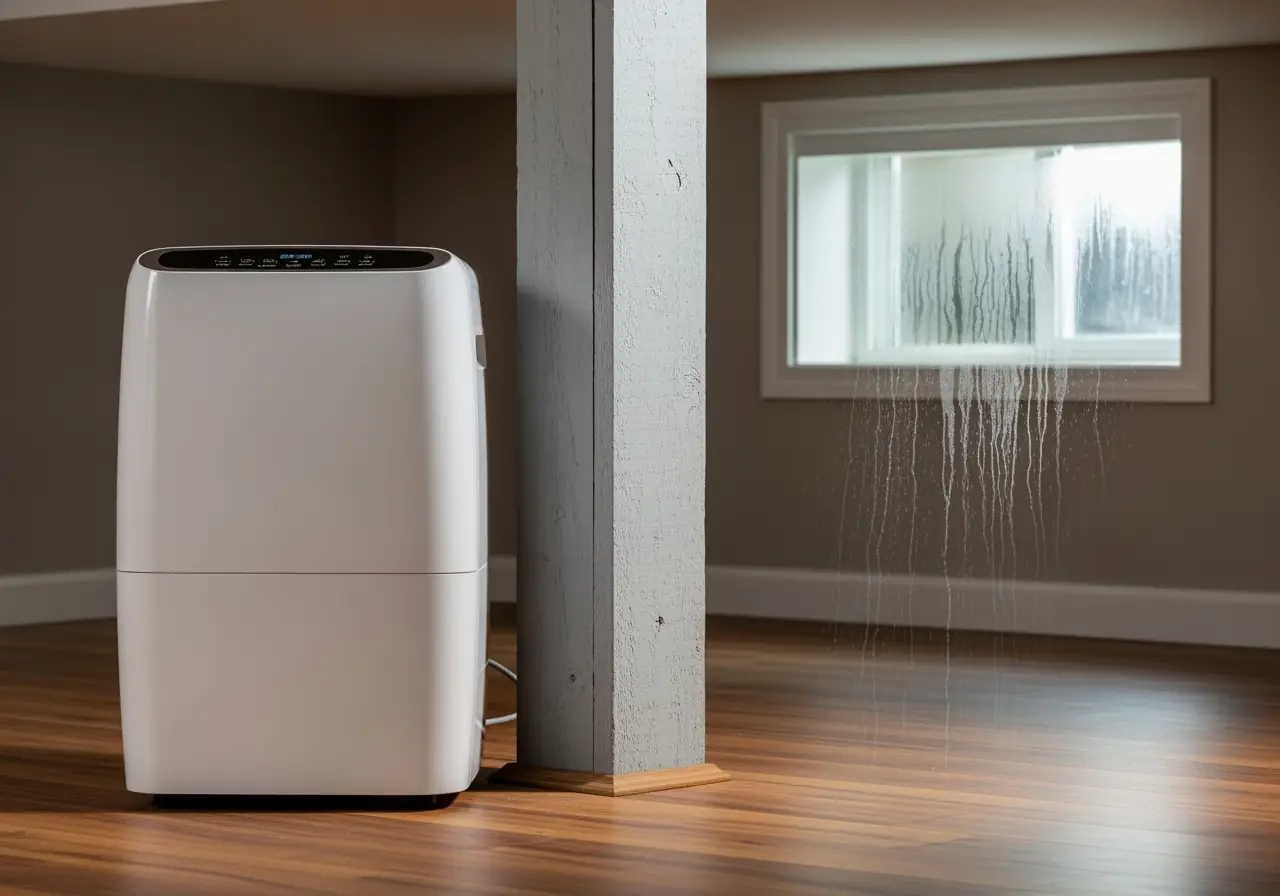
Installation Needs: Plug-and-Play vs Hardwired Systems
Residential dehumidifiers typically require only a standard electrical outlet and minimal setup. Alternatively, commercial units often need permanent installation with ductwork and can operate on various commercial voltages and multi-phase power. Some commercial models offer versatility, supporting both hardwiring or standard outlet connections.
Need expert guidance on selecting the right dehumidifier design for your space? Contact Recovery Pros today for a free consultation and quote on your next restoration or remediation project.
Use Cases and Cost Considerations
Selecting the appropriate dehumidifier type depends primarily on your specific environment and humidity control needs.
Best Dehumidifier for Home: Bedrooms, Basements, Bathrooms
For residential spaces, portability and noise levels matter most. Small-capacity units (under 30 pints) work well for bedrooms or bathrooms with mild moisture issues. Medium-capacity models (30-50 pints) suit basements up to 1,000 square feet. Energy Star certified units use approximately 14% less energy than standard models. When looking for the best small dehumidifier for a specific room, consider factors like noise output and energy efficiency alongside moisture removal capacity.
Commercial Applications: Gyms, Warehouses, Indoor Pools
Commercial dehumidifiers excel in specialized environments like indoor pools where moisture control prevents structural damage and corrosion. They're essential in warehouses storing sensitive products, gyms with high moisture from physical activity, and food processing facilities where humidity affects product quality. The best commercial dehumidifiers are designed to handle these demanding environments efficiently.
Cost Breakdown: Initial Price and Long-Term Maintenance
The price difference is substantial:
- Residential units: USD 150.00–USD 600.00
- Commercial models: USD 1500.00–USD 3500.00
- Crawl space units: USD 300.00–USD 800.00
Monthly operating costs range from USD 30.00–USD 70.00 for residential units versus USD 150.00–USD 300.00 for commercial models. When considering a new dehumidifier, factor in both the initial cost and long-term energy consumption.

When to Use a Crawl Space or High-Capacity Dehumidifier
Crawl space dehumidifiers become necessary when excess moisture causes musty odors, visible condensation, or mold growth in damp spaces. For spaces under 1,000 square feet, a 50-70 pint unit suffices, while larger areas require 90+ pint models. These specialized units are designed to operate efficiently in low temperature conditions often found in crawl spaces.
If you notice mold or musty odors in damp areas, professional mold remediation may also be required. Contact Recovery Pros for a free on-site assessment and expert remediation services tailored to your specific environment.
Conclusion
Commercial and residential dehumidifiers serve different but equally important roles in effective moisture control. Commercial dehumidifiers are built for high-performance environments like warehouses, gyms, indoor pools, and food processing plants, extracting up to 280+ pints per day and covering spaces over 4,500 sq. ft. These units feature steel construction, continuous drainage, and advanced digital controls. In contrast, residential dehumidifiers remove 30 - 70 pints daily, are lightweight, quiet, and ideal for basements, bedrooms, and living rooms under 1,000 sq. ft. While commercial models cost more ($1,500 - $3,500), many are ENERGY STAR certified, using 14% less energy despite higher power draw. Residential units ($150 - $600) offer reliable, cost-effective humidity control for everyday home use. Choosing the right dehumidifier depends on your space size, moisture level, usage frequency, and energy efficiency goals.
For expert guidance on selecting the right dehumidifier or addressing moisture issues in your property, schedule a free consultation with Recovery Pros. Our team specializes in residential and commercial humidity control solutions across NYC - ensuring fast, reliable results tailored to your environment.
FAQs
Q1. What's the main difference in capacity between residential and commercial dehumidifiers? Residential dehumidifiers typically remove 30-70 pints of moisture per day, while commercial units can extract 70 to over 280 pints daily, making them suitable for larger spaces and more demanding environments.
Q2. How do energy efficiency ratings compare between residential and commercial dehumidifiers? Despite their higher capacity, many commercial dehumidifiers are energy-efficient. ENERGY STAR certified models can use about 14% less energy than standard units. The efficiency is measured by the integrated energy factor (IEF), with higher values indicating greater efficiency.
Q3. What are the key differences in construction between residential and commercial dehumidifiers? Residential dehumidifiers usually have lightweight plastic housings for portability, while commercial units feature heavy-duty construction using materials like galvannealed steel, copper, and aluminum for durability in harsh industrial environments.
Q4. How do drainage options differ between residential and commercial dehumidifiers? Residential units often have removable water tanks that need manual emptying, while commercial models typically offer continuous drainage options through hose connections or built-in pumps, allowing for uninterrupted operation.
Q5. What factors should I consider when choosing between a residential and commercial dehumidifier? Consider the size of the space, daily moisture removal needs, noise tolerance, portability requirements, and budget. Residential units are better for smaller spaces and homes, while commercial units are ideal for large areas, warehouses, and industrial settings with high moisture levels. Also consider features like automatic defrost, operating temperature range, and the unit's dehumidification rate when making your decision.

